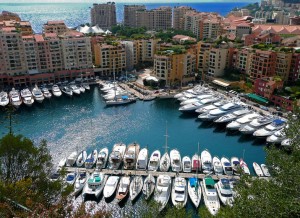 When functional obsolescence is present at a marina, it is usually one of two types: That which affects the marketability and value of the marina (which I call supply-side obsolescence) and those that are recognized by boaters (demand-side obsolescence; again my term).
When functional obsolescence is present at a marina, it is usually one of two types: That which affects the marketability and value of the marina (which I call supply-side obsolescence) and those that are recognized by boaters (demand-side obsolescence; again my term).
From marina surveys I’ve recently performed, there is a clear and almost universal pattern in demand-side obsolescence. The following items of demand-side functional obsolescence affect occupancy and rental rates:
- Single amp electrical power – the vast majority of boaters want dual amp configurations. Each power post is shared between two boats, so what the market demands are two receptacles on each side (four per post). Why? One receptacle is used for plugging in air conditioning units when the boat is docked. The other is used for everything else, of which the most pressing need is for recharging on-board batteries. Marinas with single-receptacle-only configurations have higher vacancy rates.
- 30 versus 50 amp electrical power – 30 amps are fine for most medium sized cruisers and sailboats. However, 50 amp is demanded for larger boats (the size of which varies by region, but in general is 50 feet plus). There are just more electronics to run. 30 amp-only marinas lose the larger boat market.
- Sewer pump-out – if you don’t have it, expect a large hit in occupancy.
- Slip location on the dock – there are two principal areas on many marina docks that are really hard to rent. An interior corner location, such as you might find in a “T”-shaped dock configuration, is the most difficult. You can find two of those in the “T” configuration, on both sides of the intersection of the horizontal and vertical lines that make up the letter T. The second location is alongside some marina fairways (i.e. boat waterway entrance/exit points to the marina). For instance, let’s say we have two “T” configurations next to each other (T T). The space between the two T’s is the fairway. Docking boats across from each other at the end of the T’s (the right end of the left T and the left end of the right T) are difficult to rent. On a windy or stormy day, few boaters want their boat to be docked at these locations for fear of a boat collision with boats entering or exiting the marina via this fairway. Expect significant rental discounts and much higher vacancy rates at these locations.
- Water depth and draft – as you might expect, boats require a sufficient draft to not run aground. Drafts are not universal by boat size, so I can’t give any firm guidelines here. When silt builds up, boaters recognize low draft and will not rent at slips they might otherwise if there was sufficient depth. This results in undersized boats being docked in overly large slips if the rental rates are based on price per lineal foot of boat. If they’re based on the maximum boat size that can be accommodated at the slip, this is a big problem because smaller boats will not pay higher rent for larger slip sizes (i.e. a 32 foot boat will not be docked in a 40 foot slip because the owner will not want to pay the higher rate differential when silt prevents 40 foot boats from using the slip).
- Amenity inadequacies – this is a difficult topic to quantify because marinas vary so much in the amenities they offer. By amenities, I am referring to services offered in buildings, not services at the dock or services offered under the banner of “repair”. Boaters want clean, air conditioned restrooms and showers. Pools are in demand too. Wet bars and snack bars (perhaps restaurants in some locations) are also in demand. Overnight accommodations in some areas are in demand. A lack of one and especially more than one of these items negatively affects occupancy, although the degree depends on what is missing and how much boaters in that market demand it.
- Wavy and warped docks and bulkheads – I’ve experienced this first-hand and can say the boaters that rent from marinas with such noticeable problems tend to be those with the smallest boats. Most of the mid- and large-size boats just go elsewhere.
- Combinations of the above – this double whammy is generally so expensive to fix that the marina suffers permanent functional obsolescence as a result.
In real estate, everyone talks about location, location, location. Even the best location cannot overcome the demand-side problems above. ‘Been there and done that.

